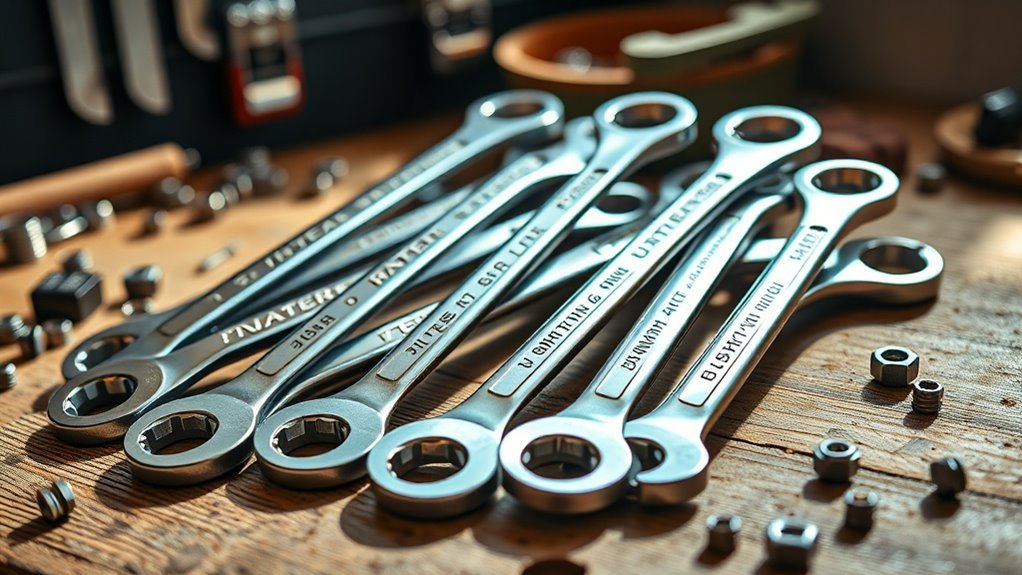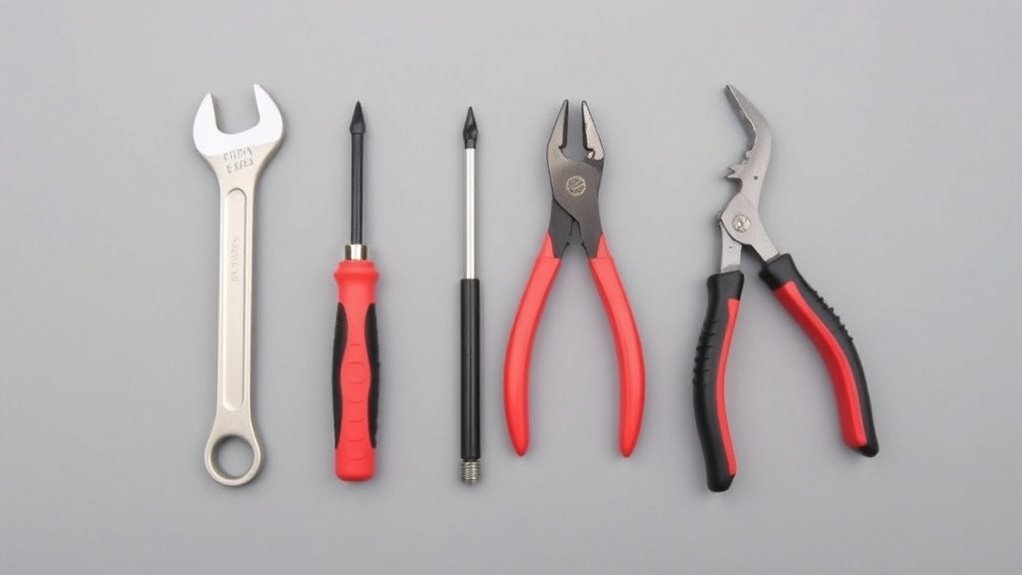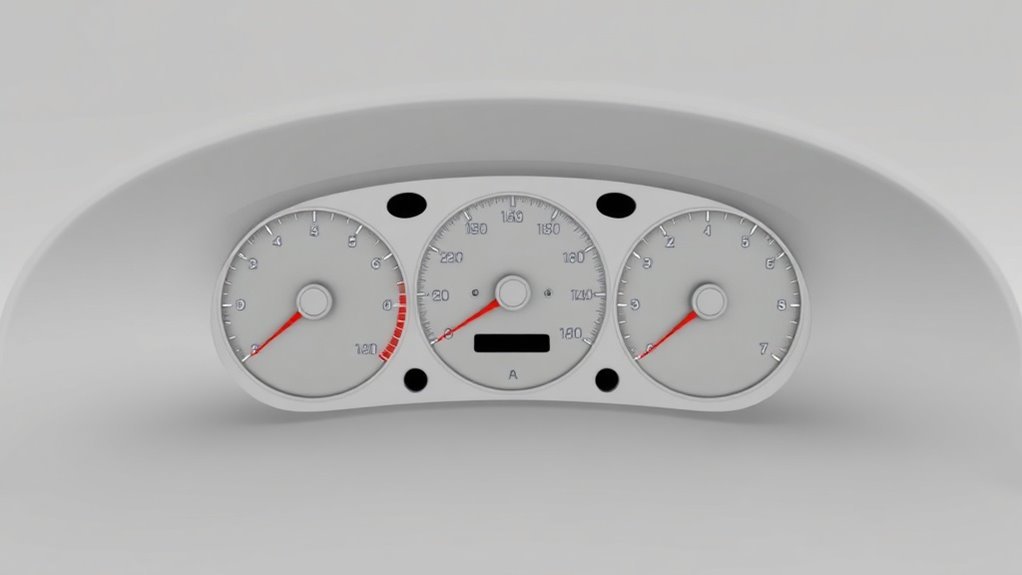The Science of Gyroscopic Tools for Balance & Measurement

Gyroscopic tools help you maintain balance and measure orientation accurately in many applications. They work on the principles of angular momentum, ensuring stability by resisting changes when tilted. From assisting pilots in aviation to enhancing functionality in smartphones and gaming, gyroscopes play an essential role in everyday life. Their technology continues to evolve, impacting various fields. As you explore further, you’ll discover more about their fascinating history and future advancements.
Key Takeaways
- Gyroscopic tools utilize angular momentum to maintain a stable orientation, crucial for balance in various applications.
- The principle of precession enables gyroscopes to resist changes and provide reliable measurements of orientation.
- In aviation, gyroscopes ensure steady flight by helping pilots navigate and maintain aircraft stability.
- Everyday devices like smartphones use gyroscopic sensors for accurate motion detection and enhanced user interaction.
- Gyroscopes are essential in robotics, allowing for balance and precise movement execution in various tasks.
Understanding Gyroscopic Motion
When you think of gyroscopic motion, it’s essential to grasp how it influences stability and orientation in various applications. A gyroscope maintains its axis of rotation, allowing you to rely on its consistent behavior. This property is pivotal in aviation, where pilots depend on gyroscopes for accurate navigation and maintaining level flight.
In smartphones, gyroscopic sensors provide precise orientation data, enabling features like screen rotation and motion-based gaming. Additionally, in robotics, gyroscopic tools help maintain balance and direction, allowing robots to execute complex movements smoothly.
Understanding this motion helps you appreciate how essential gyroscopes are in modern technology, ensuring stability in everything from airplanes to your handheld devices. Their role in navigation and balance can’t be overstated.
The History of Gyroscopes

Gyroscopes have a fascinating history that reflects humanity’s quest for understanding motion and balance.
You might be surprised to learn that the concept dates back to ancient Greece, where philosophers like Philo of Byzantium explored principles of rotation.
Fast forward to the 19th century, and you’ll find scientists like Johann Gottlieb Friedrich Kummer and Léon Foucault advancing gyro technology.
Foucault’s pendulum showed the Earth’s rotation, enthralling audiences.
In the 20th century, gyroscopes became essential for navigation, especially in aviation and space exploration.
This evolution highlights how our need for accuracy in measurement and balance has driven innovation.
Today, you see gyroscopic technology in smartphones and drones, proving that understanding motion remains as vital as ever.
How Gyroscopes Work
At the core of understanding how gyroscopes work is the principle of angular momentum. When you spin a gyroscope, it tends to maintain its orientation due to this momentum.
You’ll notice that no matter how you tilt or move the base, the spinning wheel resists changes to its axis. This resistance is called gyroscopic stability.
You can also observe precession, where the gyroscope moves at right angles to the applied force, giving it an ability to stabilize itself. The faster the wheel spins, the more pronounced these effects become.
This is why gyroscopes are essential in maintaining balance and orientation in many devices.
Applications in Aviation and Space
The principles of gyroscopic stability and angular momentum find significant applications in aviation and aerospace technology. In aircraft, gyroscopes help maintain orientation during flight, providing pilots with essential data for navigation and control.
When you think of your favorite plane soaring through the skies, remember that gyroscopic instruments guarantee stability by resisting directional changes.
In spacecraft, gyroscopes play an even more important role, helping maintain correct positioning and rotation in the vacuum of space. They assist in stabilizing satellites, where precision is necessary for communication and science experiments.
Gyroscopes in Everyday Life
Gyroscopes are more than just tools for pilots; they’re integral to your daily life too.
From the navigation systems in your smartphone to the cutting-edge sports equipment you use, these devices play an essential role.
You’ll be surprised by how often you rely on gyroscopic technology without even realizing it!
Gyroscopes in Smartphones
Smartphones have transformed how we interact with the world, and gyroscopes play a key role in this evolution. These tiny devices help your phone understand its orientation and movement, making your experience smoother and more immersive.
When you tilt your phone while gaming or steering, the gyroscope instantly detects these movements, enhancing responsiveness and accuracy. You might’ve noticed how apps use motion sensors for augmented reality (AR) experiences, allowing you to view digital objects in real-world settings.
Beyond gaming, gyroscopes aid in fitness tracking by measuring your movements accurately.
Aviation and Navigation Tools
In aviation, precision and reliable navigation are essential for safety and efficiency, and that’s where gyroscopes come into play.
These devices help pilots maintain correct orientation and attitude during flights. Gyroscopes stabilize aircraft, ensuring they remain level even in turbulent conditions, giving you peace of mind as a passenger.
In navigation, gyroscopes work alongside accelerometers and magnetometers to provide accurate readings that guide aircraft along their intended path.
When you see a flight path displayed on a screen, you can thank gyroscopic technology for its reliability.
Whether in commercial airliners or small private planes, gyroscopes play an important role in your airborne experience, making travel safer and smoother, ultimately enhancing your confidence in aviation.
Sports Equipment Innovation
The integration of gyroscopic technology in sports equipment is transforming how athletes train and perform. You might’ve noticed it in devices like smart basketballs and golf clubs equipped with gyroscopes.
These tools analyze your movements and provide real-time feedback, helping you refine your technique with precision. Imagine using a weighted basketball that tracks your shooting angle, or a golf club that measures your swing path, enhancing your training sessions.
Gyroscopic tools not only improve individual performance but are also shaping team strategies by analyzing player dynamics. Whether you’re a weekend warrior or an elite athlete, these innovations make it easier to understand your strengths and weaknesses, pushing you to new heights in your sport.
Embrace this technology to elevate your game!
The Future of Gyroscopic Technology
As technology continues to evolve, gyroscopic tools are poised to become even more integral to various fields, from aerospace to consumer electronics.
You’ll see these advancements revolutionize how we interact with our environment and enhance precision across many applications.
- Enhanced Navigation: Expect gyroscopes to improve navigation systems, offering better accuracy in varied conditions.
- Wearable Tech: Look forward to wearables that monitor and correct balance in real-time, promoting safety and performance in everyday activities.
- Robotics: Anticipate gyroscopic sensors in robotics, enabling better stability and control for autonomous machines.
These innovations won’t only affect industries but also impact how you experience technology in your daily life, making it more intuitive and responsive.
Questions
Can Gyroscopes Work in Zero Gravity Environments?
Yes, gyroscopes can work in zero gravity environments. They rely on rotational motion, which remains unaffected by gravity. You’ll find them useful for navigation and stability in spacecraft, helping maintain orientation regardless of gravitational influence.
What Materials Are Commonly Used in Gyroscope Construction?
When it comes to gyroscopes, you’ve gotta have the right stuff. Common materials include aluminum for housing, steel for axles, and various plastics or ceramics for bearings. Each plays a vital role in performance and durability.
How Accurate Are Gyroscopic Measurements?
Gyroscopic measurements can be highly accurate, often within fractions of a degree. Factors like calibration and environmental conditions can affect precision, but when properly maintained, you’ll find them reliable for various applications.
Do Gyroscopes Require Maintenance or Calibration?
You’d think gyroscopes are invincible, but they actually need occasional maintenance and calibration. Regular checks help guarantee they stay precise and reliable, so don’t ignore them if you want accurate measurements in the long run!
Can Gyroscopes Be Used in Sports Equipment?
Yes, gyroscopes can be used in sports equipment. They help with stability and precision, enhancing performance in activities like skiing and cycling. You’ll find this technology in various gear, from bikes to golf clubs.
Conclusion
In the grand tapestry of technology, gyroscopes serve as the quiet constellations guiding us through the cosmos of measurement and balance. Just as ancient mariners relied on the stars to navigate the vast oceans, today’s innovators harness gyroscopic motion to steer us toward precision and stability in our daily lives. As we forge ahead, we must embrace these silent sentinels, for they hold the key to releasing new domains of possibility, making our journeys through life a little less wobbly.






